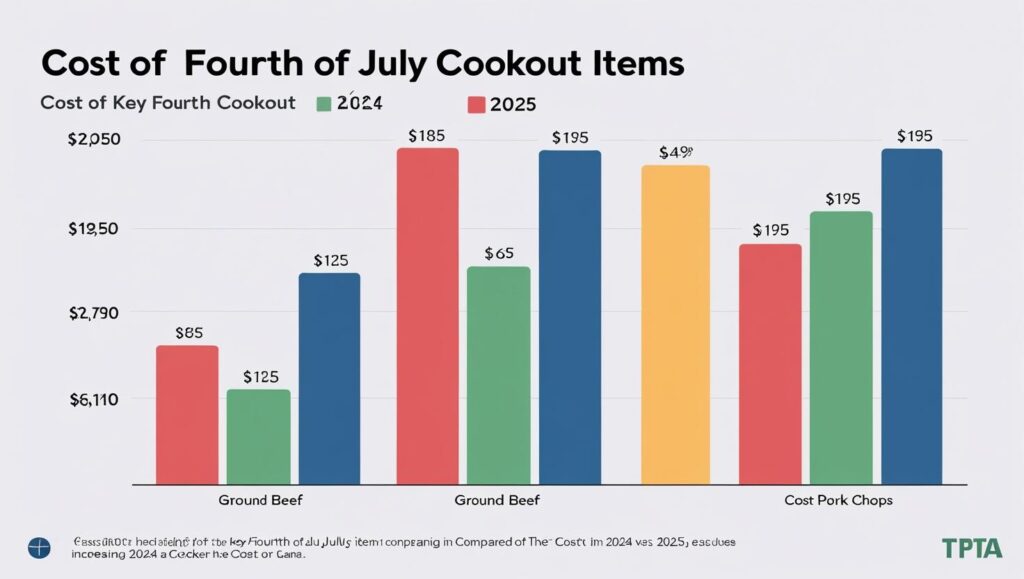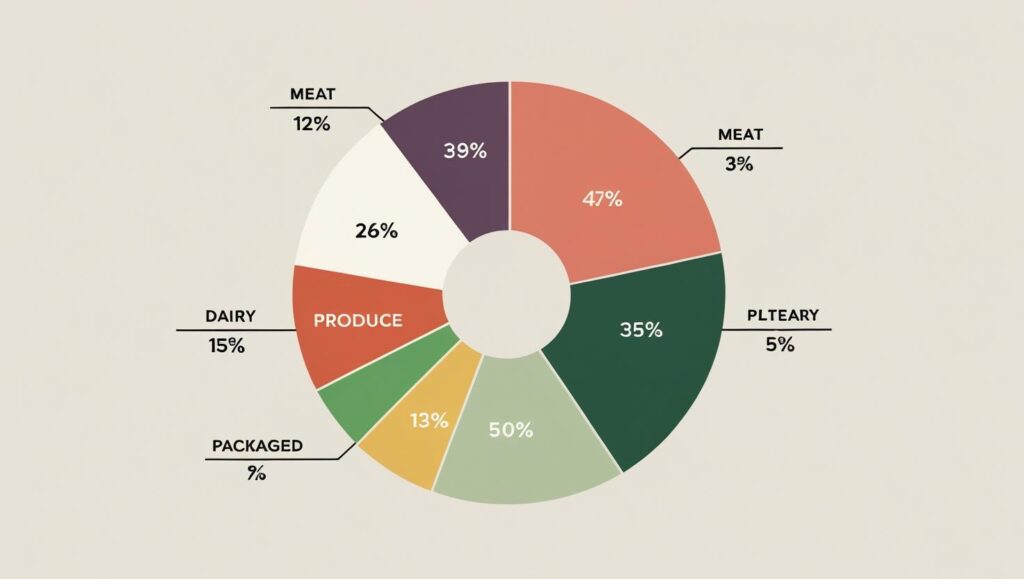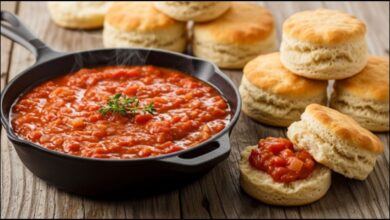Americans celebrating Independence Day are facing the second-highest food prices in over a decade for a traditional summer cookout, according to new figures. While the overall cost has slightly decreased from last year’s record, persistently high prices for staples like ground beef are straining consumer budgets, reflecting broader Fourth of July food costs shaped by stubborn grocery inflation and supply chain pressures.
| Key Fact | Detail/Statistic | Source |
| Average Cookout Cost (10 people) | $70.92 | American Farm Bureau Federation (AFBF) |
| Year-Over-Year Change | -0.4% (down from $71.22) | American Farm Bureau Federation (AFBF) |
| Key Driver of Cost Increase | Ground Beef (2 lbs) | +4.4% to $13.33 |
| Overall Food-at-Home Inflation (1-yr) | +2.2% | U.S. Bureau of Labor Statistics (BLS |
A Holiday Plate with a High Price Tag
As families across the United States gather for parades and fireworks, the cost of the traditional holiday barbecue remains a significant concern. A survey released ahead of the holiday by the American Farm Bureau Federation (AFBF) found that the average cost for a ten-person cookout is $70.92. This figure is just 30 cents below the record high set in 2024, marking this year’s celebration as the second-most expensive since the organization began tracking prices in 2013.
The slight dip offers little relief to consumers who have seen cookout costs jump by nearly 30% over the last five years. “While tariffs can impact prices on manufactured goods like canned items, the prices of Iowa-grown commodities like pork and beef tend to reflect supply and demand cycles,” said Dr. Christopher Pudenz, an economist at the Iowa Farm Bureau, in a statement. He noted that a historically low U.S. cattle herd continues to limit supply and push ground beef prices higher.
According to the AFBF survey, the retail price for two pounds of ground beef, often the centerpiece of a July Fourth meal, climbed 4.4% to $13.33. Prices for other items like pork and beans and homemade potato salad also saw increases of 8.2% and 6.6%, respectively.
Broader Economic Pressures and Grocery Inflation
These elevated Fourth of July food costs are not occurring in a vacuum. They reflect wider economic trends, including persistent grocery inflation and ongoing supply chain adjustments. The latest Consumer Price Index (CPI) from the U.S. Bureau of Labor Statistics (BLS) shows that while overall inflation is moderating, food-at-home prices have still risen 2.2% over the last year.
The U.S. Department of Agriculture (USDA), in its 2025 Food Price Outlook, has forecast that overall food prices will increase by 2.9% this year. The agency points to a combination of factors, including higher costs for labor and energy, as well as global events and trade policies that ripple through the supply chain.
“When tariffs are imposed or threatened, that leads to price increases, sourcing challenges and more strain on lower-income households,” said David Ortega, a food economist at Michigan State University, in a recent university publication on supply chain shocks. This sentiment is echoed by producers who face higher input costs for everything from animal feed to transportation.

Spotlight on Hot Dog Prices and Consumption
While burgers are a staple, hot dogs remain an iconic part of the Independence Day celebration. The National Hot Dog and Sausage Council (NHDSC) estimates that Americans will consume 150 million hot dogs on July 4th alone—enough to stretch from Washington, D.C., to Los Angeles more than five times. The summer season, from Memorial Day to Labor Day, accounts for an estimated 7 billion hot dogs consumed nationwide.
Despite their popularity, the cost of franks and their accompanying buns has also risen. The AFBF survey noted a 7% increase in the price of hamburger buns last year, a trend that has continued to affect all bread products. While specific hot dog prices were not broken out in the most recent AFBF survey, overall meat prices remain elevated. This has a direct impact on consumer spending.
How Consumer Spending is Adapting
With budgets under pressure, many consumers are altering their shopping habits. A 2025 report on consumer trends from McKinsey & Company noted that three-quarters of consumers reported “trading down” by choosing less expensive brands, buying smaller quantities, or switching to private labels, particularly for groceries.
“Overall, I’m planning to spend less simply because prices of basic needs like utilities, eggs, food in general, and fresh items have increased,” stated one consumer in the report. This behavior is especially prevalent among low- and middle-income households, who are cutting back on discretionary spending to afford essential items. This trend suggests that while many will still celebrate the holiday, the menu may look different, with some families opting for more affordable proteins like chicken, which saw a slight price decrease, or smaller portion sizes.

The persistent high cost of food remains a central economic challenge for American families. As they fire up their grills for the Fourth of July, the cost of celebrating is a stark reminder of the lingering financial pressures, forcing many to make difficult choices between tradition and affordability.
Read More
What Science Says About the Best Time to Eat Dinner for Your Metabolism and Sleep


 How Quick Air Fryer Meals Are Reshaping the American Kitchen
How Quick Air Fryer Meals Are Reshaping the American Kitchen A Depression-Era Staple, Southern Tomato Gravy, Finds New Life in Modern Kitchens
A Depression-Era Staple, Southern Tomato Gravy, Finds New Life in Modern Kitchens Why a Forgotten 1950s Cake with a Secret Ingredient Is Trending Again
Why a Forgotten 1950s Cake with a Secret Ingredient Is Trending Again More Than a Dessert: How Tar Heel Pie Captures the Essence of North Carolina
More Than a Dessert: How Tar Heel Pie Captures the Essence of North Carolina